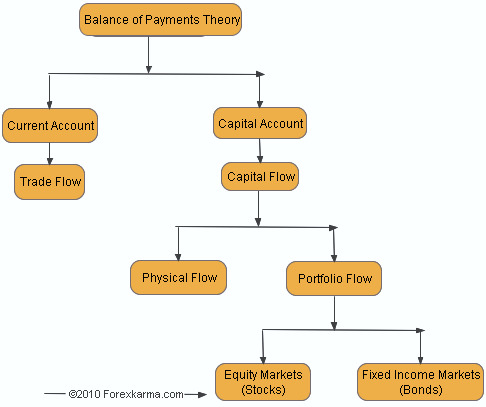Unit 7
Balance of payments

- Measure of $ inflows and outflows between the US and the rest of the world (Row)
*outflows are referred to as DEBITS
- The balance of payments is % into 3 accounts
*capital/financial account
*official reserves account
Current Account

- Balance of trade and net exports
*exports create a credit to balance of payments
*imports create a debit to the balance of payments
- Net foreign income
Ex. interest payments on US owned Brazilian bonds. Interest payments on German owned US treasury bonds.
- Net transfers (tend to be unilateral)
Capital/Financial Account

- The balance of capital ownership
- Includes the purchase of both real and financial assets
- Direct investment in the US is a credit to the capital account
- Direct investment by US firms/individuals in a foreign country are debits to the capital accounts
- Purchase of foreign financial assets represents a debit to the capital account
- Purchase of domestic financial assets by foreigners represents a credit to the capital account
Official Reserves
- The foreign currency holdings of the US federal reserve system.
- When there is a balance of payments surplus the FED accumulates foreign currency and debits the balance of payments.
- When there is a balance of payments deficit the FED depletes its reserves of foreign currency and credits the balance of payments
- The official reserves 0 out the balance of payments
The United States is passive in its use of official reserves. It does not seek to manipulate the dollar exchange rate
Formula!!
Balance of trade:
Goods exports + Good imports
Balance on goods and services:
Goods exports + service exports + goods imports + service imports
Current Account:
Balance on goods and services + net investment + net transfers
Capital Account:
foreign purchases + domestic purchases
Foreign exchange (FOREX)
- The buying and selling of currency
- Any transaction that occurs in the balance of payments necessitates foreign exchange
Changes in exchange rates
- Exchange rates (e) are a function of the supply and demand for currency.
- An increase in the S of a currency will decrease the exchange rate of a currency
- A decrease in S of a currency will increase the exchange rate of a currency
- An increase in D for a currency will increase the exchange rate of a currency
- A decrease in D for a currency will decrease the exchange rate of a currency
Appreciation and depreciation
- Appreciation of a currency occurs when the exchange rate of that currency increases
- Depreciation of a currency occurs when the exchange rate of that currency decreases
Exchange rate determinants
1. Consumer's taste
2. Relative income
3. Relative price level
4. Speculation
Exports and imports

- The exchange rate is a determinant of both exports and imports
- Appreciation of the $ causes American goods to be relatively more expensive and foreign goods to be relatively cheaper thus reducing exports and increasing imports
Fixed rates
- Based on a country's willingness to distribute currency and to control the amounts
- The US uses a fixed rate the $1 stays $1
Absolute advantage

- Individual- exists when a person can produce more of a certain good/service than someone else in the same amount of time (or can produce a good using the least amount of resources)
- National- exists when a country can produce more of a good/service than another country can in the same time period
Comparative advantage

- A person or a nation has a comparative advantage in the production of a product when it can produce the product at a lower domestic opportunity cost than can a trading partner
Specialization and trade
- Gains from trade are based on comparative advantage, not absolute advantage-Examples output:
- tons per acre
- miles per gallon
- words per minute
- apples per tree
- television produced per hour
Examples input:
-# of hours to do a job
-# of acres to feed a horse
-# of gallons of paint to paint a house
